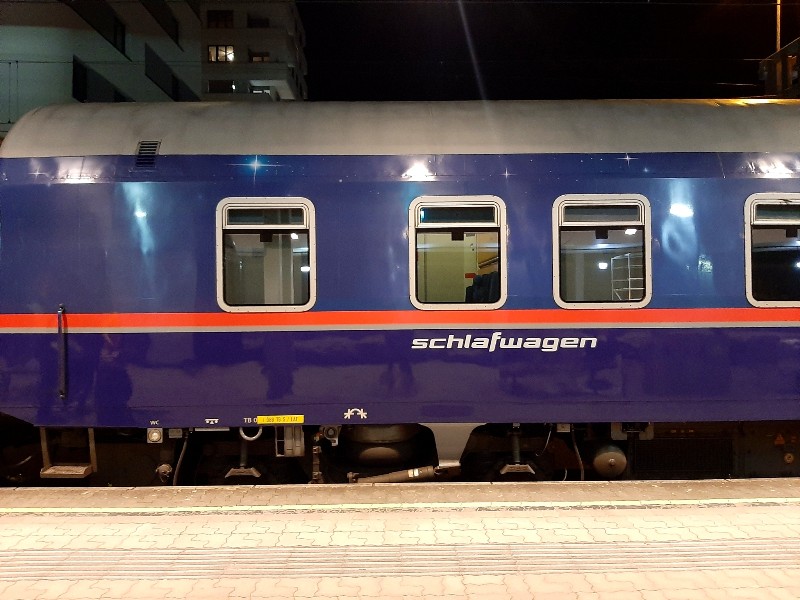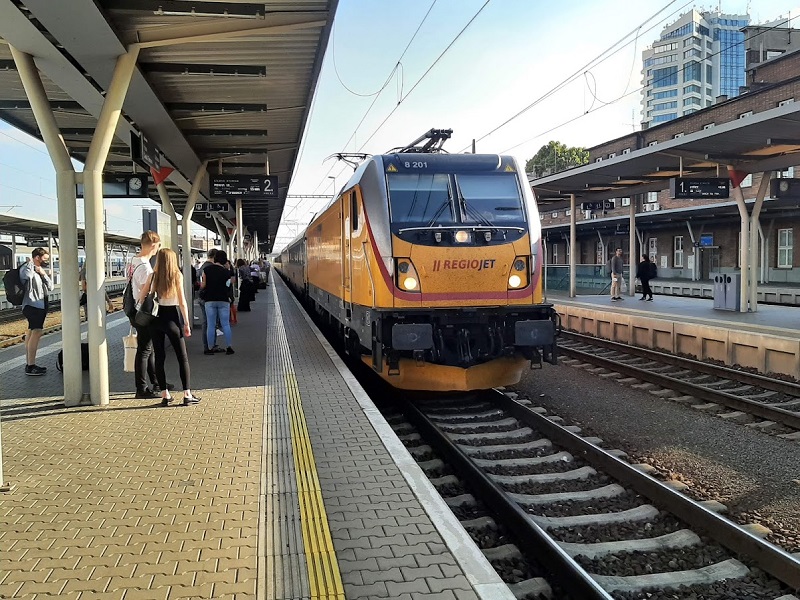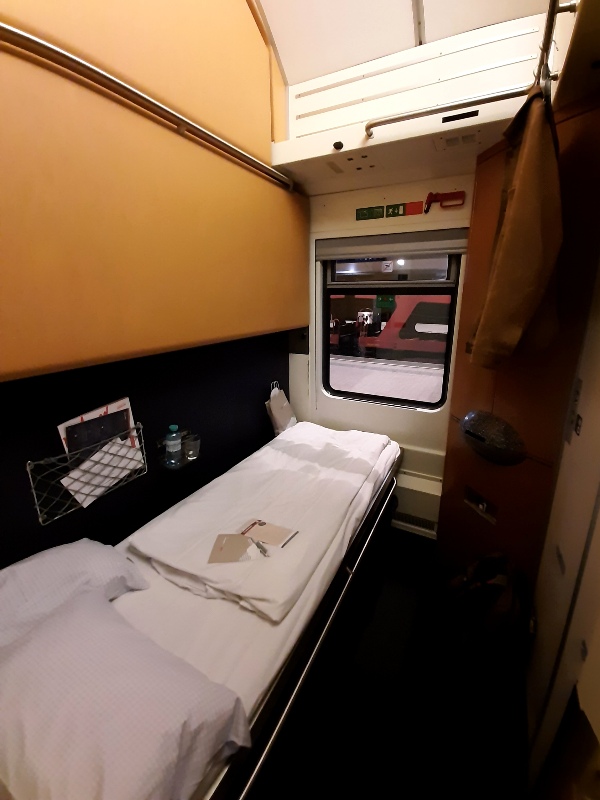The Future of Night Trains in Europe: Is Expansion Realistic?
Major international newspapers and travel publications have proclaimed that a new era of night train travel is upon us with sleeper trains even linking UK cities to mainland Europe in the near future. However, how realistic are such plans?
Night train network
Today, British newspaper The Independent wrote that “sleeper trains are the future of transcontinental travel”.
According to the article, we could see a night train network in 2030 that would “ultimately join the dots between some 200 cities, starting in the UK at one end but extending as far as Moscow and Istanbul in the east, and Palermo, Palma and Athens in the south”.
Luxury lifestyle and travel magazine Condé Nast Traveler reported that in 2024 a luxury “hotel on rails” will be launched which will eventually include a night train connection between Paris and Edinburgh as well as between Paris and Lisbon.
These are just two of the most recent examples of major international publications promising us a new golden age of night train travel.

The benefits of sleeper trains
Personally, I’m a big fan of night train travel as it’s not only a comfortable way of travelling with a bit of old-fashioned romanticism thrown in, but also a highly time-effective way to cover large distances.
Taking a sleeper train saves a night’s hotel bill and allows you to arrive well-rested at your destination in the morning, ready for a day of business meetings or some sightseeing.
Try that when you have to wake up at 3am in order to go to the airport to catch a 6.30am flight to your destination!
Of course, there are other benefits too, with many people opting for trains above planes as it’s a greener and more environmentally conscious way of travelling.
Although proposals for an expansion of the night train network in Europe are of course always welcomed, they aren’t always as realistic international publications make you believe.

The future of night trains
Lately, I’m getting quite a bit annoyed at newspaper reports such as the two examples above that promise us a “new golden age of night train travel” as there are a lot of hurdles which need to be overcome.
A lot of these proposals for new night trains are therefore highly unrealistic – something many newspapers and travel magazines often fail to mention.
I get it – it’s easy to write about future travel dreams and to share glitzy renderings of luxurious sleeper trains – but it’s simply not always realistic.
According to transport policy expert Jon Worth, who runs the Trains for Europe campaign to scale up night trains on the continent, a lot of people assume that running a night train service is easy even though in reality it is much more difficult.
Jon Worth said: “I think a lot of people have seen what ÖBB [the Austrian Federal Railways] has been able to do, and hence assumed that scaling up night train services should not be too difficult.
“Sure, the visions here are OK, but we need people who can turn these visions into reality – and those people are sorely lacking in most railway companies, and among politicians.”

Nightjet
Worth refers to ÖBB’s highly successful Nightjet sleeper trains, which link dozens of cities in Western and Central Europe.
When Deutsche Bahn (the German Railways) decided to discontinue their City Night Line services in 2016, it created a huge void in the European sleeper train network.
However, ÖBB stepped up and managed to successfully introduce new night train services in Europe.
Even though most Nightjet trains link Austrian cities such as Vienna with destinations in nearby countries like Germany, Italy, France, Belgium and The Netherlands, there are also some Nightjet routes which run completely outside of Austria such as the sleeper train between Hamburg and Zurich.
The success of ÖBB has led to a new enthusiasm for night train travel among politicians and railway entrepreneurs alike.
Jon Worth however warned: “The European Commission says the right things about wanting to promote night trains, but has all its talk led to concrete steps forward? I am not sure it has so far.”

European night train network
The Independent article cited an ambitious plan by Germany’s Green Party which would see the creation of a night train network across Europe.
Called the “Euro Night Sprinter”, it envisions a sleeper train network that would link 200 cities across the continent.
According to Jon Worth, these plans are “not the worst” he has seen and he thinks that “at least two thirds of the routes proposed are viable in terms of the technicalities and the trip times”.
On his Trains for Europe website, Worth assessed the viability and likelihood of these routes coming to fruition.
Even though a lot of these routes could theoretically be realised by 2030, there are some major issues that would need to be tackled first.
Jon Worth said: “The problem is with the lack of operators – who would run these lines? The Greens who proposed the map have no idea, and indeed no-one does.
“The big railway companies – DB, SNCF, Renfe, Trenitalia – do not want to run night trains, and you cannot leave the whole business to ÖBB – they’re too small.
“Until we can answer that, these sorts of maps will stay as dreams.
“A couple of these routes could happen, but I can’t imagine more than a handful will.”

UK to Europe night train
Both the German Greens as well as French start-up company Midnight Trains envision night train connections between the UK and mainland Europe.
However, it is extremely unlikely that this will ever happen.
Jon Worth explained: “Currently no operator owns night trains that are approved to run through the Channel Tunnel.
“The HS1 line to London is standard loading gauge, so envisaging a train for that one – something based on ÖBB’s Nightjet for example – could be possible.
“The rest of the UK would need something smaller gauge, but then paths on the high speed line to London would be a problem in the morning hours, so you would need a high speed night train ideally, that no operator has.
“Then there is the headache of passport checks and security checks for the tunnel – operationally it is an absolute nightmare.”
A more practical solution would be for British travellers to take the Eurostar to mainland Europe and connect to a night train there.
Worth said: “The best option would be to make Bruxelles Midi [Brussels South railway station] a night train hub, to allow easy connections with night trains there.”

Start-up companies
Lately, a few start-up railway companies have entered the night train market.
Belgian-Dutch company company European Sleeper will start a night train connection this year which will link Brussels and Amsterdam with Berlin, Dresden and Prague.
To secure the needed rolling stock for their night train service, European Sleeper has partnered with Czech train operator RegioJet, the largest private railway company in Central Europe.
However, while European Sleeper has already secured its sleeper wagons, it isn’t clear yet how other start-up companies like Midnight Trains will actually operate their planned services.
Jon Worth said: “Midnight Trains does not even have a plan at the moment for trains whether to order new or buy second-hand and renovate.”

Unlikely routes
Worth is also highly critical about some of the proposed routes by Midnight Trains, saying that he cannot see them becoming reality.
He said: “Paris to Madrid and Porto: Forget it, as you would need dual gauge trains for that, or 300kph trains for Madrid as an alternative.
“Paris-Vienna is run by ÖBB anyway, and Paris-Berlin is due to be started by ÖBB in partnership with DB by 2023.
“If I were in the shoes of Midnight Trains I would aim to get one route going – something like Paris – Milan – Venice, that might just work.
“Midnight Trains has slick marketing, but has no viable operational plan at the moment as far as I can tell.
“Oh and as if that was not enough, France is about the most complex country in Europe for approval of trains and to get paths – and access to the Paris railway terminals is eye wateringly expensive.
“Other that all of that it looks like a brilliant plan!”

The right way forward
Perhaps the biggest hurdle which potential night train operators face is getting their hands on actual sleeper wagons.
There aren’t many second-hand sleeper carriages available in Europe which can easily get legal approval to run on railways across the continent.
Jon Worth said: “As I have argued at Trains for Europe, the first step is that someone has to order a fleet of new trains.
“But the problem is who could actually do that?
“The companies that could – SNCF, DB, Trenitalia, Renfe – do not want to and those that want to – Regiojet, Snälltåget, European Sleeper – are too small to do so.
“The focus first of all has to be to solve that.”
As a solution, Worth proposed creating a consortium of smaller companies which would be able to organise the procurement of sleeper carriages.
On his website, Worth explained that making an order for a small number of carriages to a bespoke design will lead to high production costs per carriage, while making a much larger order will significantly lower costs.

Other solutions
However, there are other issues that impact cross border rail in general which would need to be tackled.
According to Worth, these are issues such as “track access charges, station access charges, slot allocation, and timetabling and ticketing”.
He said: “None of these problems is insurmountable, but the crucial one is the trains themselves – without an order for new trains there’s no way to step up the provision of overnight services.”

Conclusion
Even though a couple of high-profile international publications have proclaimed that a new era of night train travel is upon us, the reality is that there are still a lot of challenges overcome in order for sleeper trains to thrive in the future.
Although fancy renderings and cool-looking maps of future night train routes steal a lot of the limelight, the unsexy reality is that sleeper train operators face a lot of challenges, with the procurement of the right rolling stock perhaps being the biggest problem.
However, as a big fan of night trains I’m happy to see that this way of travel is getting a lot of media attention and traction among the public.
I just hope that media reports will be a bit more realistic and critical by highlighting the challenges night train operators face, as these issues need to be addressed if we want to see a pan-European network of sleeper trains in the future.
Never miss out on news and flight deals
If you want to stay up to date on the latest travel news, make sure to regularly check the Paliparan website.
Or subscribe to our Twitter, Facebook and Instagram and pages to receive instant Paliparan updates!

